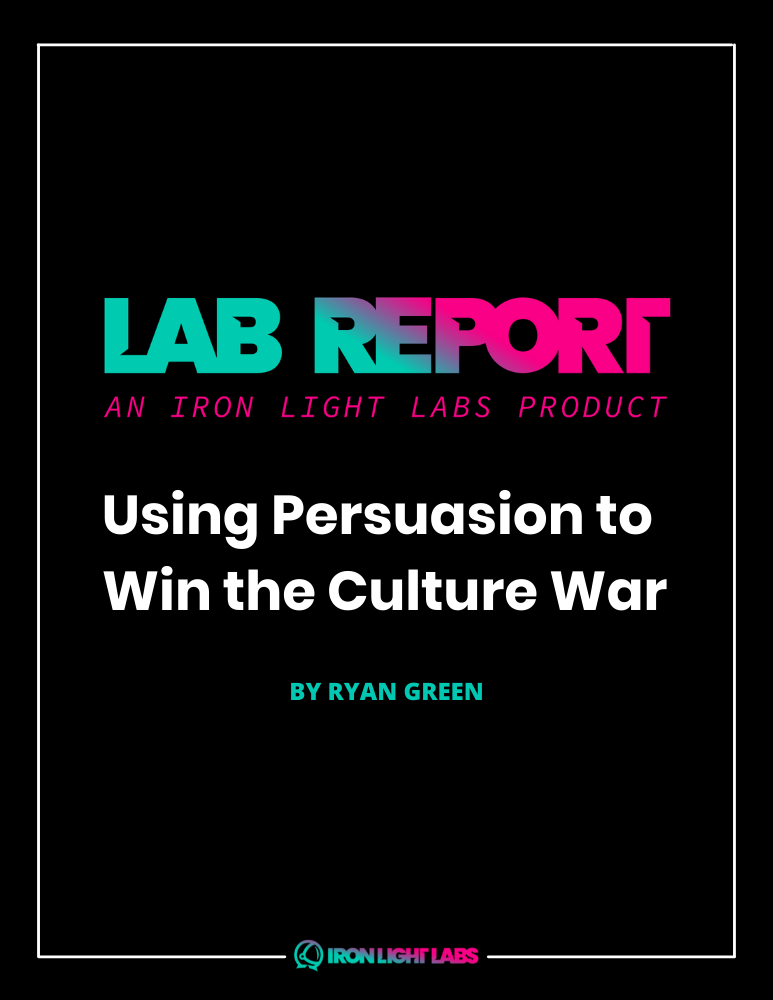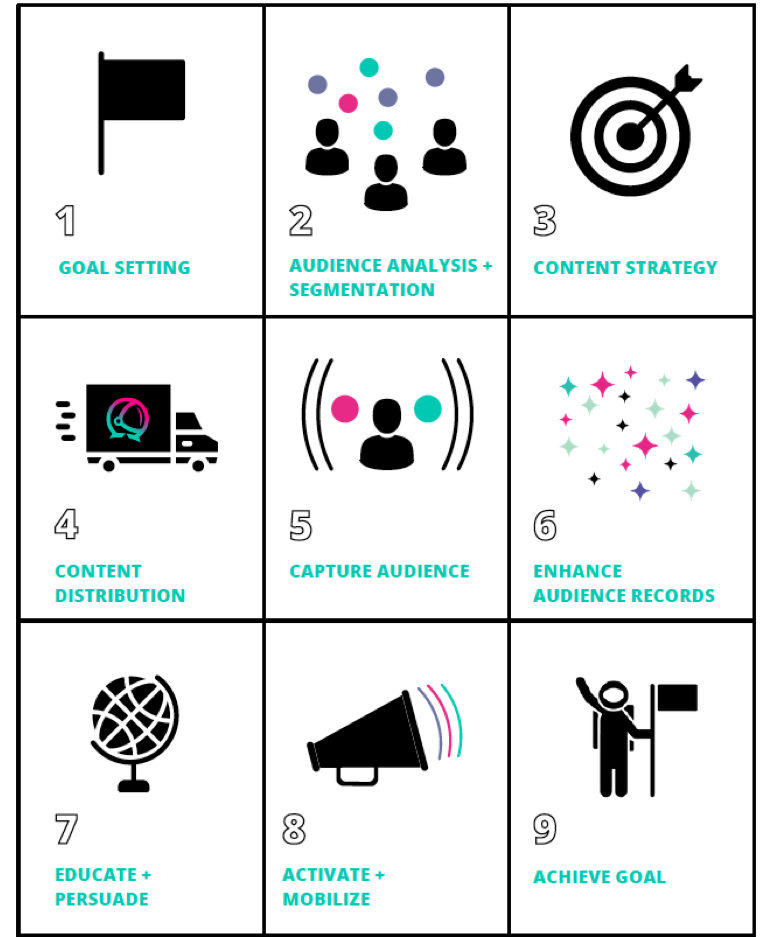
We operate in an attention economy and attention is a scarce resource. Every brand, entertainer, politician and individual is competing for the attention of an audience.
“A WEALTH OF INFORMATION CREATES A POVERTY OF ATTENTION.”
The term “attention economy” was coined by psychologist and economist Herbert A. Simon who described attention as a “bottleneck” in human thought. He also noted that “a wealth of information creates a poverty of attention.”
We win in the attention economy by delivering value consistently over time. Delivering value retains attention, builds relationships, and ultimately compels action.
Delivering value requires a specific objective; an understanding of your audiences’ problems, needs, and desires; a consumable message; and a mutually beneficial way to engage (an exchange of value).
Like other scarce resources, attention has become costly to attain due to increased demand. Companies like Alphabet, Amazon, and Apple have reached trillion-dollar valuations because of their ability to capture, retain and monetize attention. Active users – from Amazon Prime subscribers to daily YouTube viewers – has become a key metric for these companies.
When competing for attention we must define an active user in order to effectively measure success. An active user for a politician, for example, could be defined as a voter. We define an active user as an individual who has opted in to our community by providing their first name, last name, email, and zip code and has interacted with our brand within the last 30 days.
We focus on email because it remains one of the most effective and cost-efficient ways to retain attention and deliver value. An email allows you to follow your active users to multiple platforms, which has become increasingly important as social media platforms such as Facebook, Twitter, and Google make it more difficult to reach their audiences.
The following steps outline the process we’ve used to deliver value to large-scale active user communities, shape narratives, and win. In the coming months, we will unpack each step in our process and provide trainings that will allow you to compete and win in the attention economy.

Begin with the end in mind and define the journey you want your audience to take with you.
What do you hope to achieve together with your audience? What value are you going to provide to your audience along the way? What will the world look like once you achieve your goal? Whose lives will be improved if you achieve your goal?
You cannot define your audience, formulate your message, or offer ways to engage without first defining your goal. Goal-setting is also when you determine the value you’re going to provide to your audience.
OKR (Objectives + Key Results) is a framework for achieving audacious goals and is used by companies like Google, The Gates Foundation, and many others.
An objective is what you want to achieve and should be action-oriented and inspirational. Objectives can be longer-term and rolled over.
Key results (limit 3-5) are the roadmap to reach the objective and should be specific, time-bound, and measurable. Key results should evolve as work progresses. Key results are where you can begin defining the audience you’d like to reach and determine the active user goals required to achieve your objective.
Before beginning your journey, commit objectives and key results to paper.
Once you’ve determined your objectives and key results, you’re ready to begin defining and understanding your audience. What are the challenges facing your audience? What are their needs and desires? How and where do you anticipate them engaging with you?
Working with data providers, market researchers, and data scientists you can model and identify key segments in target areas. The goal of this process is to define your most highly leveraged audiences.
The most highly leveraged audiences for political and advocacy brands are often defined by voting propensity (unregistered, low-turnout, mid-turnout, and high-turnout) and level of support for your issue, cause, or candidate. In most cases, you’ll look to target the “persuadable middle,” which includes undecided voters and low- to mid-turnout voters who lean in support of your issue, cause, or candidate.
Once voters are modeled and segmented, you can begin formulating a content and distribution strategy including mapping to digital audiences on platforms such as Facebook, Google, etc.
Content is one of the most critical, if not the most critical, step in building and persuading audiences. Much of the value provided by brands is delivered through content. The right content captures and retains attention and drives action and engagement. The wrong content repels audiences and can even make them nearly impossible to reach in the future.
Our approach to content strategy is based around neuropsychologist David Rock’s SCARF model, which we deploy to draw attention to our message and compete in culture across party lines. The model is an acronym for what triggers an approach or avoid response (fight or flight) in individuals – status, certainty, autonomy, relatedness, and fairness – and is independent of party affiliation.
When content is crafted through the SCARF lens, it becomes highly effective in capturing attention, driving narratives, fostering deeper connections and engagement, and ultimately motivating audiences to action. Note: Storytelling is highly leveraged content in the domains of relatedness (ingroup vs. outgroup) and fairness (just vs. unjust).
Once your audience segments and content have been created, you can begin the distribution process by mapping content to a customized channel mix — legacy media, email, Facebook, YouTube, etc. Content mapping means tailoring content to each channel in order to deliver a quality experience to the end-user. If you’ve ever picked up a phone and heard a fax machine tone, you know what it’s like to experience content that was not properly configured for a distribution channel.
But delivering content isn’t just about the channel. You must also consider the four realms of an experience, which include entertainment, education, esthetic, and escapism.
An entertainment experience occurs when audiences passively absorb content (e.g. satirical content). An educational experience occurs when audiences actively absorb content, (e.g. whitepapers or infographics). An escapism experience occurs when audiences are immersed in content (e.g. binge-watching videos). An esthetic experience occurs when audiences passively consume visual content (e.g. editorial cartoons or photojournalism).
Brands create value and attention when the right message is delivered in the right format on the right platform at the right time to the right audience.
Building an active user base becomes easier if you deliver value and provide a clear path for audiences to join you on your journey. These paths are delivered in the form of conversion opportunities (e.g. Facebook lead forms). A conversion is defined as a user opting into your email list by providing their first name, last name, email, and zip code. A user becomes active when they engage with your brand within a 30 day period.
One strategy for building a large active user base is through “low friction” issue campaigns that run year-round.
Political and advocacy brands can have an outsized impact by building a grassroots infrastructure that doesn’t fold up after an election but can be used across political cycles and policy battles.
A critical threshold for active users is 25% of a target audience, which is typically determined by population size within a defined geographic area such as a legislative district or state.
The 25% threshold is based on a University of Pennsylvania study by Damon Centola, which determined 25% of a community is the tipping point for social change.
Enhancing records and segmenting audiences aids in the process of persuading and activating users and ultimately delivering value. By enhancing records with third-party data such as voter records, you can deliver a highly customized experience to your audience.
As active users engage with your brand, you are able to append additional information such as issue interest, advocacy behavior, etc. An effective record enhancement tool is surveys. Surveys can be used to determine ideology, stance on a predetermined set of issues, and interest in volunteering, donating, voting, etc.
Surveys can also be used as a measurement tool to determine success in persuading active users by creating an initial issue or ideological benchmark that’s tracked over time.
Once someone has opted in to your community and become an active user, you have earned the opportunity to educate and persuade them by delivering value through compelling content.
The content and delivery format should be determined by an active user’s profile.
The goal of the content should be to persuade active users and move them down a predetermined behavior map. A behavior map outlines interactions you want a user to take in order to reach a preferred end-state (e.g. donating, voting, volunteering, etc.).
Follow-up surveys should be delivered to active users after a predetermined period to determine the effectiveness of persuasion efforts.
The final step in the persuasion process is activation and mobilization. This is when the hard work pays off and you’re able to drive narratives, influence lawmakers, win elections, and change laws.
Calls-to-action should be customized for active users based on their profile. Active users who match a predetermined set of criteria can be activated and mobilized to complete a preferred action (e.g. donating, voting, volunteering, etc.).
Political and policy brands can segment active users to key districts and races in order to mobilize voters to vote for their preferred candidate(s) and/or ballot initiatives. Political brands can also focus on registering and turning out unregistered voters.
Highly engaged active users should be encouraged to join activist groups and serve as the tip of the spear in advocacy campaigns. Building a large activist group allows you to activate thousands of voters to email and call their lawmakers at a moment’s notice, with little to no additional marketing spend required.
The final step in the persuasion process is activation and mobilization. This is when the hard work pays off and you’re able to drive narratives, influence lawmakers, win elections, and change laws.
